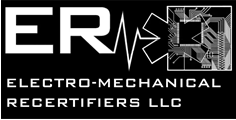Daniel Minzari, Morten S. Jellesen, Per Møller, Pia Wahlberg, and Rajan Ambat
Abstract—Electrochemical migration behavior of end terminals on ceramic chip resistors (CCRs) was studied using a novel experimental setup in varying sodium chloride concentrations from 0 to 1000 ppm. The chip resistor used for the investigation was 10-kΩ CCR size 0805 with end terminals made of 97Sn3Pb alloy. Anodic polarization behavior of the electrode materials was investigated using a microelectrochemical setup. Material makeup of the chip resistor was investigated using scanning electron microscopy (SEM)/energy dispersive spectroscopy and focused-ion-beam SEM. Results showed that the dissolution rate of the Sn and stability of Sn ions in the solution layer play a significant role in the formation of dendrites, which is controlled by chloride concentration and potential bias. Morphology, composition, and resistance of the dendrites were dependent on chloride concentration and potential.
CORROSION of electronic devices in humid environment is of serious concern today due to the combination of multimaterial use, potential bias, and miniaturization on printed circuit boards (PCBs). Process- and service-related contaminations accelerate corrosion by making the environment more aggressive [1], [2]. Due to corrosion problems, the life span of products is reduced [3], and failure or loss of functionality of devices leads to severe economic loss, plant downtime, and customer dissatisfaction.
Miniaturization at all levels is one of the key factors reducing corrosion reliability. Over the last ten years, the size of electronics has been reduced by over 70%. For flip-chip ICs, miniaturization amounts to ∼90%. The closer spacing increases the electric field (E = V/d, where E is the electric field, V is the applied potential, and d is the distance between the terminals), which makes corrosion cell formation easy during local condensation under humid environments. At constant voltage, the electric field between the conductors rises inversely with the conductor spacing, and corrosion phenomena such as electrochemical migration (ECM) are known to be enhanced under high electric fields [6], [7].

Recent Comments